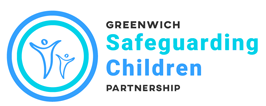Child Sexual Abuse (CSA)
Sexual abuse Involves forcing or enticing a child or young person to take part in sexual activities, not necessarily involving a high level of violence, whether or not the child is aware of what is happening. The activities may involve physical contact, including assault by penetration (for example, rape or oral sex) or non-penetrative acts, such as masturbation, kissing, rubbing, and touching outside of clothing. They may also include non-contact activities, such as involving children in looking at, or in the production of, sexual images, watching sexual activities, encouraging children to behave in sexually inappropriate ways, or grooming a child in preparation for abuse. Sexual abuse can take place online, and technology can be used to facilitate offline abuse. Sexual abuse is not solely perpetrated by adult males. Women can also commit acts of sexual abuse, as can other children. Working Together 2023
An allegation or suspicion of child sexual abuse (CSA) must be acted upon robustly. It is a difficult area for staff to manage. CSA includes physical contact (both penetrative and non-penetrative acts), non-contact activities such as exposure to sexually explicit material, and child sexual exploitation (CSE). The exact prevalence of CSA is unknown, however, it is clear that much goes unreported. In a survey of 18 – 24-year-olds, 11% considered themselves to have been sexually abused. This pathway aims to simplify the process and make the referral pathway and sources of advice available clear. This pathway is for all staff who work with children, or with adults who have children and has been updated with time frames and accountability for referrals to the HAVEN.
Final CSA and therapeutic pathway 2024 June 28th Greenwich
